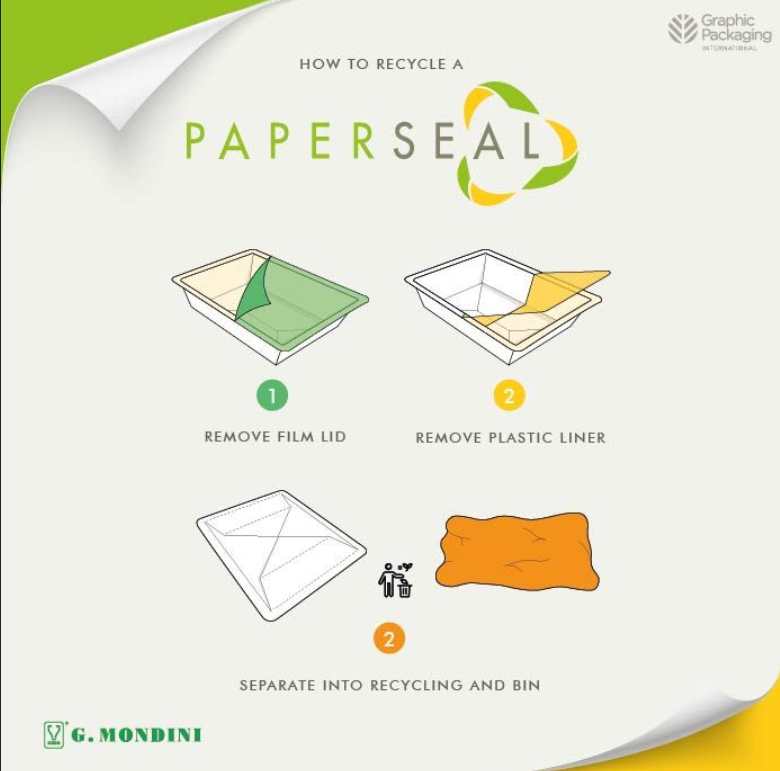The answer is YES, and this article will provide a detailed explanation of how you can do all that.
Meat consumers make more than 90% of the entire world’s population. Resultantly, the demand for raw meat and ready-made meat products is higher than many other food items. In fact, The World Counts expects global meat consumption to grow exponentially and touch the alarming threshold of 570 million tons in 2050.
As meat belongs to the food category that mostly comes in plastic wraps and packaging, these statistics pose a serious threat to the world’s oceans and its environment.
But should the entire meat packaging be disposed of in the waste bin? Can you recycle meat packaging? Parts of it, at least, if not all?
Can You Recycle Meat Packaging?
One may occasionally find meat wrapped entirely in thin transparent film or obscured in boxes, but an abundant amount of supermarket meat appears in packing trays, having an absorbent pad, a cling film and a card sleeve along with it. So let’s chat about each one:
1. Base Trays
The purpose of base trays is to secure the meat and to ensure its correct portion. The size of the trays is only as large as the portion they are supposed to hold. This optimisation leads to reduced material usage, and ultimately, lesser energy consumption and waste production.
Meat trays are often plastic-based, yet can be recycled if they carry a resin identification code of 1, 2, 3 and 5.
These codes identify that plastic is a PET, HDPE, UPVC or a PP. Such plastics are usually rigid. They retain their properties after usage and hence, it is easier to recycle them into a carton, bottles or other similar containers.
So, the answer to the frequently asked question: “Can you recycle plastic meat trays?” is yes, you can. But you need to know which ones.
On the other hand, paper-based tray solutions have emerged to support the “Plastic-Free” initiative of the world. One of them, known as PaperSeal tray, utilises almost 90% paperboard, reducing plastic usage to only 10-20%. These trays are recyclable in every region and locality, solving the worldwide issue of overflowing landfills and extensive waste going to oceans.

2. The Absorbent Meat Pad
Absorbent meat pads, present at the bottom of the meat containers, serve to keep the meat shelf-friendly and fresh. These pads absorb the natural liquid that spills out from raw or semi-cooked meat products, and thus, they keep them from spoiling.
Silica gel and cellulose are two of the most commonly used absorbents used for meat pads. Unfortunately, the thin perforated plastic film over these meat pads makes them unrecyclable and hence, they need to be disposed of safely.
However, it is recommended that you check locally with the authorities to ensure there is, in fact, no facility in your region that might take them before sorting them with the waste products.
3. Transparent Stretch Films
Transparent stretch films hold the meat securely in the base trays and aim to provide the consumers with a clear view of the product they are buying.
Although made of plastic, this film has 80% lower energy consumption, leading to a smaller carbon footprint than most of its alternatives.
In many regions, including Australia, both commercial and import plastic wraps are recyclable. Therefore, both businesses and consumers should check in with their local facilities before throwing them away.
4. Card Sleeves
Card sleeves carry additional information about the product, including branding, pricing and portion size. These sleeves are environment-friendly and widely recyclable. In fact, the use of card sleeves cut down the requirement of plastic stretch films. Hence, businesses should not hesitate in branding their meat products.
Why Using Plastic Stretch Wraps in Meat Packaging is Inevitable?
Consumers tend to prefer products that appear visually appealing at first glance. Plastic stretch wraps over meat items serve this purpose quite well. Therefore, barring these products behind opaque packaging can seriously affect sales.
Furthermore, the plastic in meat packaging is essential for keeping excess oxygen, contaminants and water vapours out. These elements can potentially react and stimulate bacterial growth in the meat, causing it to spoil before reaching the consumers.
Also, the lower weight of plastic-wrapped meat trays instead of lid-based containers makes their transportation efficient and environment-friendly.
Hence, the plastic in meat packaging not only facilitates the consumers but also assists in keeping the carbon footprint of the entire packaging process to the minimum.
The Future of Meat Packaging
The future of meat packaging is “green”. Reducing the amount of plastic to the minimum and replacing current solutions with sustainable and compostable material is our only chance towards a better tomorrow.
Select Equip understands this, which is why we have introduced innovative and recyclable packaging solutions by reducing base tray waste to 1-2%, plastic usage to just 10% and top film waste by 40%.
Want more information? Contact us here.